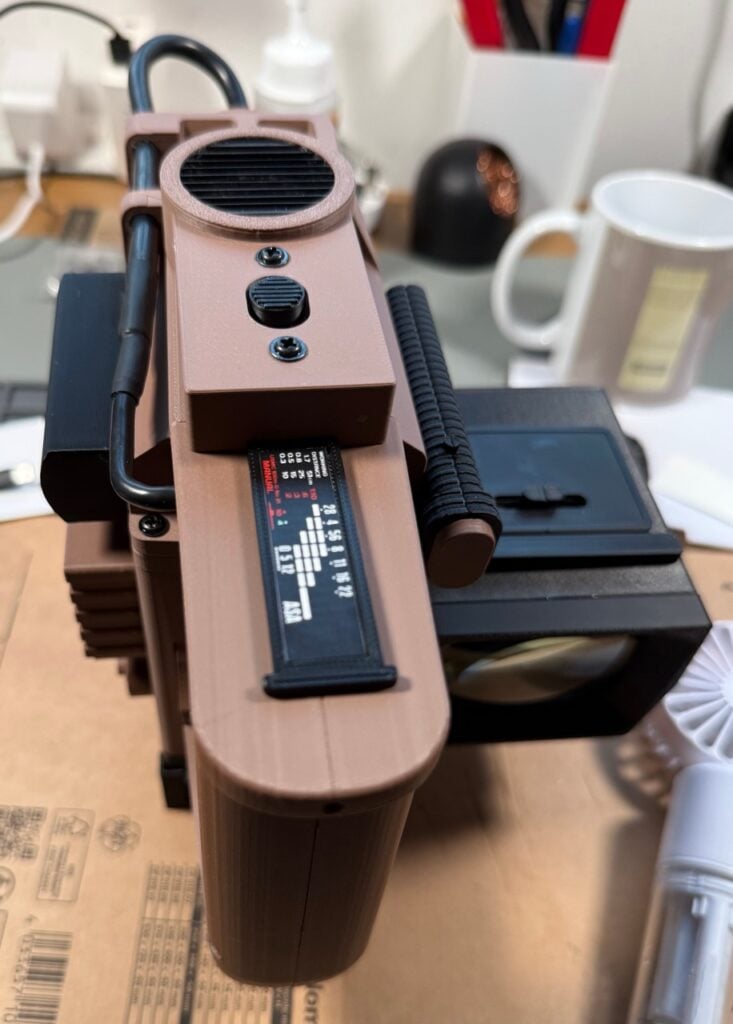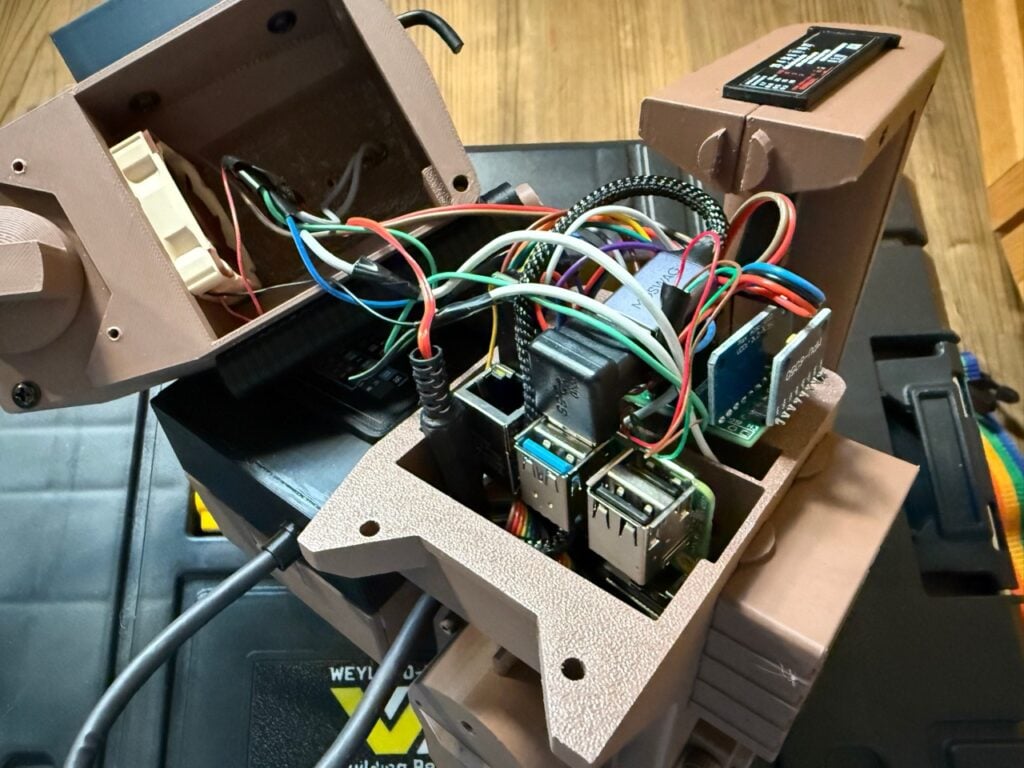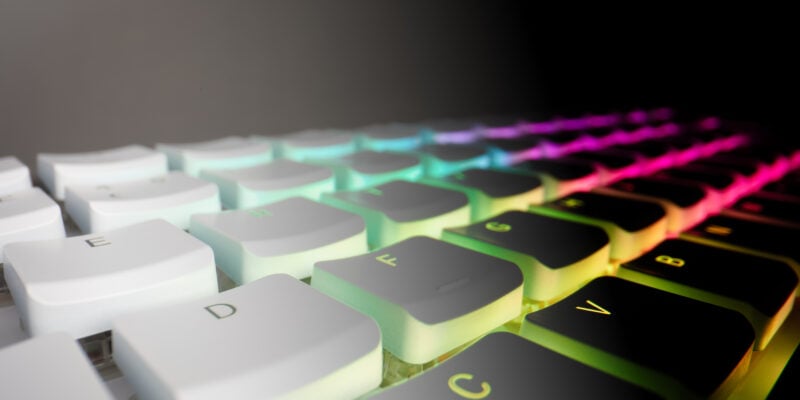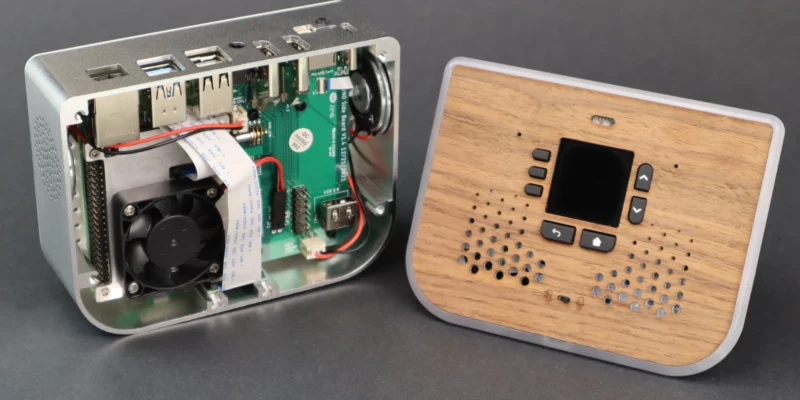M314 Alien Motion Tracker
By David Crookes. Posted
As fans of the Alien movies will no doubt agree, the M314 Motion Detector is a cool piece of kit. Aside from being super-useful – the Colonial Marines would certainly have struggled to detect the presence of aliens without its ultrasound capabilities – the handheld device, with its rugged military looks, was also something of a design masterpiece.
Over the years, many people have replicated the prop, right down to the iconic, suspense-building, beeping sound made as it locks on to movement. Among those enthusiasts is Rob Smith, who first toyed with the idea of making such a device ten years ago. He’d stumbled across the RCWL-0516 Arduino radar module and instantly thought of Aliens. “It would just react to nearby movement,” he says. And so began a quest to create a tracker that actually works, unlike replicas (and the movie version) that just play back video.
Advertisement
Christmas is coming – keep Santa on the right track with our Raspberry Pi gift guide!
Although the plan was parked for some time, the recent launch of the Alien: Earth series on the FX television channel motivated Rob to get cracking. “The project had been on my to-do list for a long time and I thought now would be a good time to actually get moving on it,” he says. As luck would have it, the project would also prove less expensive. “Consumer-based radar modules have developed a lot over the past ten years,” he adds. “Some of them were very expensive and are now relatively cheaper and more accessible.”
Signal locked
At first, Rob mocked up plans based on an older radar module. He needed it to pan left and right to scan the environment. “I still don’t know if that would have worked, because I received an email about a new radar module and the demo on the website made me instantly think it was the right part for me.

The module he ended up using was the DreamHAT+ radar costing £100. “It was specially designed for Raspberry Pi 4 Model B and Raspberry Pi 5 computers,” says Rob, who liked the fact it had a 60GHz mm-wave radar with a range of up to 15 metres. The challenge was to make use of the data to generate a realistic picture and sound on a TFT display and speakers that would be integrated into the project. “I was originally tempted to try to incorporate a thermal camera into the design too, but in the end I decided to keep the prop as close to the original as possible.”
Having a Raspberry Pi computer as part of the set-up allowed Rob to achieve his aims. “A lot of off-the-shelf radar modules do the processing for you, so you don’t get any control,” he explains. “They will tell you the distance usually, but not always the angle. I wanted more control and DreamHAT+ radar gives the raw data from the sensor. The amount of processing required was quite a bit more than I’d expected, so Raspberry Pi made more sense in this case.”
It also helped that the radar came with example programs coded in Python and that it was set up to run in the Linux environment. “It was easier to progress along this route,” Rob says. From that point, the project began to evolve quickly. “I didn’t need many components, although as the project evolved, a few were added,” he reveals. These included an accelerometer originally added to move the display as the device is rotated. “I didn’t anticipate using it to help reject the user’s motion from the radar whilst holding the device.”
Pulse rising
The components needed to fit inside the tracker’s case, but this was trickier than first imagined. Rob opted to use 3D-
printable files of the M314 Motion Detector available on Thingiverse, but he noted space would be tight. “I hadn’t realised how small the tracker actually was and fitting Raspberry Pi, the radar module, and a suitable battery power supply inside was actually quite difficult,” he says.

“I also had problems sourcing an LCD screen that was about the right size. Due to the limitations of the case, I couldn’t use an HDMI screen either as there simply wasn’t room in the case for the cable to plug in, so instead I opted for one controlled via SPI. I also spent many hours in Tinkercad and Blender adjusting the model to fit my requirements and I had to slightly enlarge the viewer part to fit the LCD panel, including its PCB. This meant having to redesign other parts and work out how wires got from the viewer into the main body of the tracker.”
Target acquired
It took a fair bit of trial and error to get right, with Rob reprinting the main body and top part about eight times before he was happy with it. But that’s not to say the build is complete. Rob has already identified several areas where it could be improved, yet overall it’s working well.
The radar is picking up the required data, although the range is less than expected. The detections are also appearing as a series of blue dots on the screen just as they do in the film. Rob worked on making the screen like a CRT display. “The big blue dots are blurred to simulate the softer glow of an old CRT,” he says. What’s more, the sound is faithful with pop noises and a tone recorded from the Aliens film. The latter can be synthesised at any frequency.

So what could be done? “I’ve already experimented with different parameters for the radar,” he says. “It doesn’t really affect the results it gives, but it reduces power consumption, which is always handy. I’d also like the signal processing – which takes the radar information and works out where the movements are – to be further refined, making it more accurate by reducing false positives.”
Rob is also pondering whether or not to add a headphone jack and he’s considering moving the internal fan to make more space. But even without these additions, it’s still an impressive build. “It was the first real Raspberry Pi project I’ve worked on, so everything was a learning curve,” Rob says. “It also took me so long to create, I didn’t actually get around to watching Alien: Earth until I’d finished writing the build guide.”
Subscribe to Raspberry Pi Official Magazine
Save up to 37% off the cover price and get a FREE Raspberry Pi Pico 2 W with a subscription to Raspberry Pi Official Magazine.
More articles

Christmas Gift Guide in Raspberry Pi Official Magazine 160
There’s a ton of great stuff in issue 160, including the incredible motion scanner, inspired by the film Aliens. It’s beautiful, it uses Raspberry Pi technology and makes a satisfying ping sound, and the best thing about it is that it actually works, thanks to a DreamHAT+ radar board. Yes, you too can join the […]
Read more →

Win a Raspberry Pi 500+ and Raspberry Pi Monitor!
Fancy getting the most powerful Raspberry Pi desktop setup? Raspberry Pi 500+ and Raspberry Pi monitor pair perfectly together for a portable – and fixed – desktop computer, powered by Raspberry Pi. We have a set to give away, and you can enter below. A Raspberry Pi 500+ & Raspberry Pi Monitor
Read more →

All right all right!! Artificial Intelligence, Hollywood style
When we get AI right, odds on it’ll be thanks to small firms, motivated individuals, and Raspberry Pi
Read more →
Sign up to the newsletter
Get every issue delivered directly to your inbox and keep up to date with the latest news, offers, events, and more.
